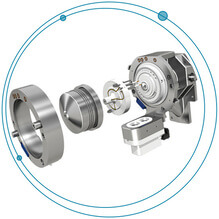 Why You Need Differential Mobility Spectrometry for Forensic Mass Spec Analysis
Why You Need Differential Mobility Spectrometry for Forensic Mass Spec Analysis
Forensics depend on detection of even the smallest compounds to deliver results you can rely on. You need fast analysis methods that provide highly accurate data across a multitude of compounds and biomarkers, which enable you to uphold result integrity and get the truth from your samples.
Mass spectrometry has become fundamental to the evolution of forensic science. As instruments have become more sophisticated, law enforcement can now get results from the smallest samples of lingering traces of crime, in a manner that will stand up in court. However, the ever-increasing sensitivity and throughput requirements of forensic assays can pose method development challenges, even for the most powerful LC-MS/MS technology.
Getting the Right Answer is Crucial to Your Forensic Investigation
As with many applications of quantitative analysis, forensic analytes can be difficult to accurately detect because of complex matrices or the presence of chemical interferences. Furthermore, compounds may be isobaric and consequentially challenging to separate with conventional separation technology.
Where LC-MS/MS sensitivity alone is not enough for complex assays that demand exceptionally selective quantitative and qualitative performance, Differential Ion Mobility Technology has proven to be a valuable addition.
SelexION® DMS Technology Will Breakthrough Sensitivity Barriers
SelexION DMS Technology, coupled with QTRAP or TripleTOF LC-MS systems, can separate analytes of identical mass, reduce chemical noise, and improve quantitative accuracy, to rapidly deliver the forensic data you need. You can benefit from high throughput methods with little or no sample preparation and minimal chromatographic retention.
DMS separates ions based on the difference between their ion mobility’s in a high and low electric field in gases at or near atmospheric pressure. SelexION is placed in front of the inlet of the mass spectrometer, and the ionized molecules travel into the orthogonal geometry shaped DMS cell. Ions are separated on mobility scale due to differences in molecular size and shape, thereby providing highly selective analysis with minimal background interferences.
Advantages of the planar DMS geometry include:
- Short residence times
- Rapid voltage changes for MRM operation
- MRM cycle times of 25 msec (20 msec pause time)
- Fast LC support
- Transparent Mode
- Allows all ions to be transmitted by turning off voltages
- Minimal diffusion losses
- Uniform conditions for the addition of chemical modifiers
SelexION offers a unique approach to separation that is unmatched by any other available method. Download the e-book to find out how we achieved LOD of 0.05 ng/mL and LOQ of 0.5 ng/mL using SelexION technology in the analysis of methyldienolone in urine, which were otherwise 2 and 5 ng/mL respectively without.
Find out about The Science Behind SelexION Differential Ion Mobility Technology and how SeleXION Addresses Your Biggest Analytical Challenges.






 Contact Support
Contact Support
0 Comments